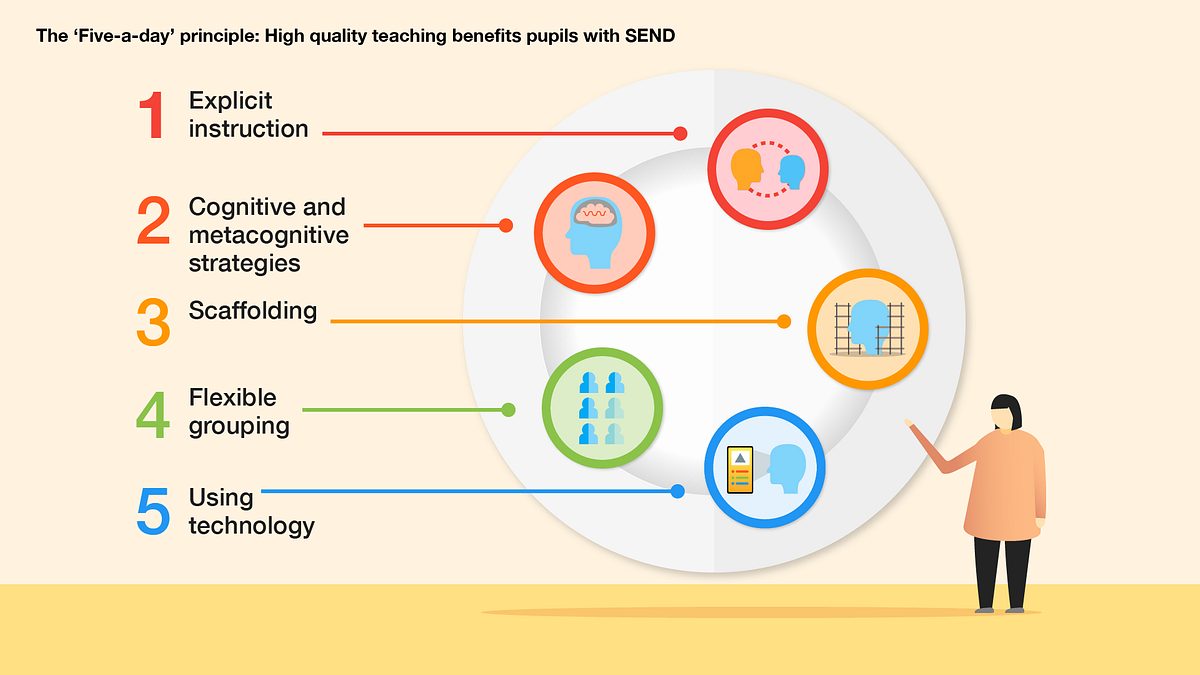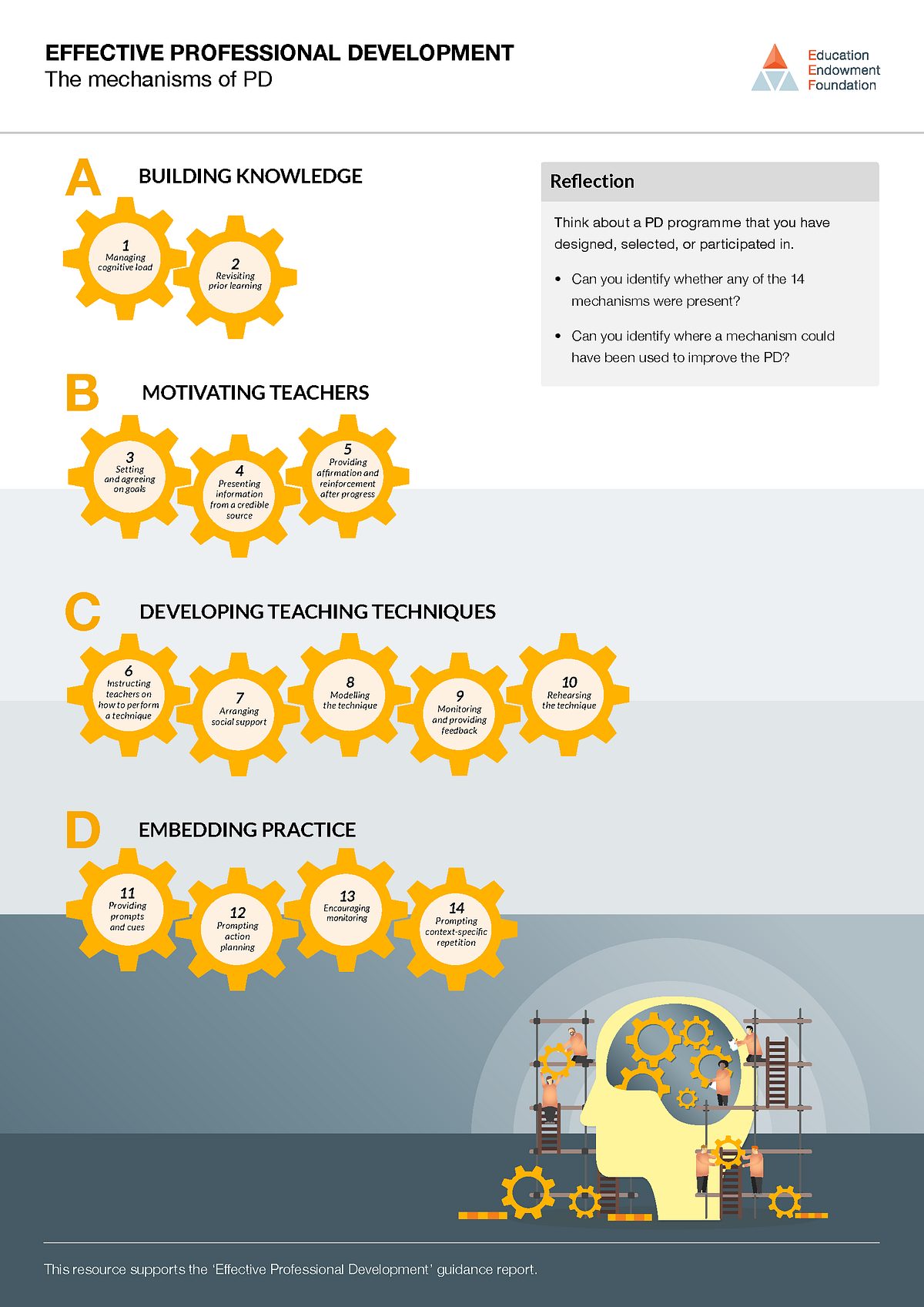The EEF guidance report on ‘Special Education Needs in Mainstream Schools’ recommends that teachers employ and embed five strategies into their day-to-day practice to support the progress of pupils with SEND.

The SENDCo is key in supporting teachers to implement such this ‘Five-a-day’ of teaching, but how do we actually go about this? The EEF’s Effective Professional Development provides guidance that SENDCos and SEND leaders may well find useful:

As school leaders begin to set Professional Development priorities and schedules for the coming academic year, the guidance report encourages school leaders to take a balanced approach.
The evidence encourages SENDCos to plan a programme that ‘builds knowledge’, ‘motivates teachers’, ‘develops teaching techniques’ and ‘embeds practice’.
If the aim is to embed the ‘Five-a-day’ into teaching practice, that might mean delivering a programme that does something like the following:
Build knowledge – Managing cognitive load
You might deliver a session to all staff in September, carefully outlining the Five-a-day approach. When planning this session, consider what staff know already. Additionally, you may decide not to cover all five approaches in one go, but to take a staggered approach.
Sharing simple tools – such as the Five-a-day poster can support with this. Practical examples – visually, verbally or through video exemplification – could also be shared to help manage colleagues’ cognitive load.
Motivating teachers – Presenting information from a credible source
In your INSET session, or via some pre-reading if appropriate, show colleagues that there is good evidence underpinning the ‘Five-a-day’ approach. For instance, you could show them the Metacognition and self-regulation page from the EEF’s Teaching and Learning Toolkit, or share a recommendation from the guidance report on the same topic.
There is a balance to be achieved when it comes to sharing sources with busy teachers. Presenting credible information can be counterproductive if it is done in a way that isn’t considerate of staff workload.
Developing teaching techniques – Modelling the technique
It is crucial to demonstrate the Five-a-day in action. In role as class teacher (or even through a filmed lesson, where possible), show colleagues the steps involved in Explicit Instruction. For instance, you could model some of the questions that you might ask pupils when taking a metacognitive approach. Share some of the visual scaffolds you might use to support pupils to be independent learners (and remember, just like our pupils, our teaching colleagues also learn via modelling and deliberate practice).
Embedding practice – Providing prompts and cues
Too often, PD programmes can fail because teachers see them as disparate, one-off events. Instead, you might work with senior leaders to ensure that you can build upon the momentum gathered, long after your initial session.
More than simply sharing your slides, you might plan a series of prompts and cues in the coming weeks to reinforce your message. This could be in writing, as part of a staff bulletin; orally, as part of a staff meeting; or on film, as part of seeing these techniques being tried out in practice. It might be celebratory, publicly praising colleagues who embed this into their practice.
We know that successful professional development can make a positive difference. With a well-thought through PD programme, using the mechanisms above, SENDCos and SEND leaders can bring teachers closer to the evidence, developing the teaching practice of colleagues, and ultimately improving the outcomes of children and young people with SEND.
